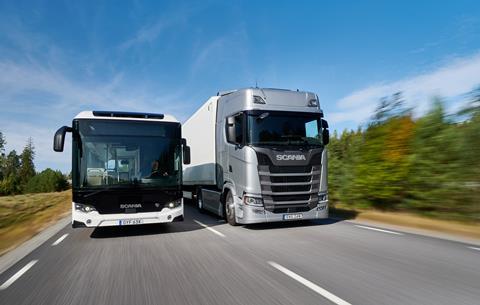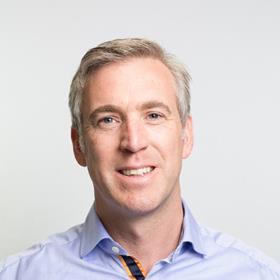At last week’s AMS Livestream Hour Mathias Wijkström detailed how sustainability was ingrained in Scania’s company culture and how necessary that was for the future success of the company
Scania has a strategy-focused approach to sustainability in its inbound supply chain according to Mathias Wijkström, head of the global Scania Production System (SPS) Office. That strategy encompasses the packaging the commercial vehicle maker uses for inbound parts and is informing its management of the batteries used to power its Scania Citywide electric bus.

Wijkström was speaking at last week’s Livestream Hour on Strategies for Greener Production, hosted by Automotive Manufacturing Solutions, sister publication to Automotive Logistics.
Investing in an environmentally friendly product and the odd sustainable production process only make sense when they are part of a comprehensive strategy, explained Wijkström: “[They have] to become part of your DNA… and part of your decision models; [sustainability] has to be part of the methods and principles that guide operational activities.”
According to Wijkström, packaging needs to be part of a circular business model in which the company not only uses recyclable packaging but ensures it stays part of a closed loop in which the material is reused for the same purpose.
However, closing the loop on packaging has implications for long-term partnerships with suppliers. Traditionally, OEMs have different suppliers for a given component to ensure they have the flexibility to switch if conditions mean one becomes more suitable than the other. That situation can hamper a closed-loop recycling system.
“In the circular business model, you’d like to have one partner that you have a long-term commitment with and that is scary,” said Wijkström. “Then you have to start building trust and it’s totally different from what you have done before.”
A successful sustainability strategy depends on such long-term commitments with existing suppliers, but the question of trust also applies to partnerships with start-ups and specialised technology providers. “There are so many possibilities, and no-one knows exactly which way [technology] will go, so you have to work with partners and build new ways to collaborate,” Wijkström said.
Golden batteries
A good example of that is in the development of the battery technology Scania is bringing into its trucks and buses. The company has been making hybrid buses since 2015 and introduced its first fully electric bus in 2019 – the Citywide. The first fully electric truck will begin series production next year.
As electric vehicles (EVs) gain traction, increasing numbers of automotive OEMs are bringing battery assembly in-house, even if the cells usually still come from a supplier – Northvolt in Sweden, in Scania’s case. Aside from shortening the supply chain, bringing battery assembly inhouse also reduces the dependency on Asian battery manufacturers.
“[Scania] was one of the first to invest in Northvolt, which is setting up a huge battery factory in the north of Sweden. On the other hand, we are also working with five companies who are more like solutions providers. You have to team up – You have to have the knowledge yourself, but you also have to be open to partnerships.”
As with the packaging, Wijkström sees the battery plant as an opportunity to make the supply chain more circular, as well as to shorten it.

“Looking at the product we produce today, it’s about 98% recyclable, however it’s very low-value recyclable,” he said. “If you look into the future, with batteries becoming common for the heavy truck industry, we will end up with a pile of gold in the back of the truck. And this will, of course, be a value stream that will be very interesting to get hold of.”
Taking control of battery assembly also means it is easier for Scania to ensure that the batteries can also be disassembled more easily. “If you can do that in a more cost-effective way than the competition, you will have an opportunity to make profit in that value stream as well,” he added.
Action-backed vision
That sort of long-term vision is vital for sustainable initiatives to succeed. At the same time, it needs to be backed-up with short-term actions and targets.
“I see a lot of companies that set out a long-term vision, like becoming CO2 neutral in 2035 or 2050, [which is] a long-distance future and one where no-one currently in the management team will be left,” said Wijkström. “Unfortunately, you don’t really see them backing it up with short-term actions and proof that they are moving in this direction.”
Proving the company is moving in the right direction depends on a change in culture based on sustainable guidelines.
Being at a big, established company like Scania is both a big benefit and a big risk, said Wijkström. Such a company needs to balance having expertise in the processes and methods that are relevant for today, as well as building relevant expertise for tomorrow. You also cannot be afraid to get rid of parts of the business that have lost their relevance.
At the same time, a company cannot neglect the established technology that is currently bringing in the profit.
“It’s also about giving acknowledgement to the people who are working with the current production system and parts, but at the same time you also need to get new knowledge about what could be relevant for the future,” Wijkström explained.
That knowledge comes with an influx of fresh talent and a sustainable approach to manufacturing is a way of attracting it, according to Wijkström.
That in itself is a risk for a legacy vehicle maker. Sometimes top and middle management, who have made a career in the world of yesterday, are reluctant to adapt to change. It is a risk worth taking because if management is not leading on innovative business models, the company will become a dinosaur, Wijkström warns. Thankfully, Scania’s CEO Henrik Henriksson takes a keen interest in sustainability, he added.
It is key for established companies, such as Scania, to build and constantly re-evaluate their knowledge, processes and methods and get external help when required, and resist the inertia of big companies.
Wijkström summed it up: “We are really good at building trucks. This is of course our strength, but we also have to look at the production system and … those competencies that are not relevant, we have to get rid of and we have to fill it up with new stuff. The companies that are able to do that – to build on what they have, their strength, and incorporate new strength, they will be the winners going forward.”
The next Automotive Logistics Livestream Hour takes place on December 9 and will provide for insight on vehicle demand, production and trade across the Middle East and North Africa, with input from General Motors’ head of purchasing and supply chain for the Middle East, Sulaiman Pallak

























![Global[1]](https://d3n5uof8vony13.cloudfront.net/Pictures/web/a/d/s/global1_726550.svgz)













No comments yet